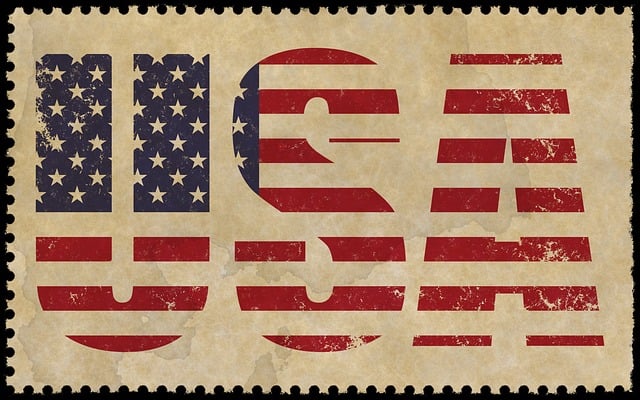The US Army Reserve Flag, designed in 1975, utilizes vibrant red, white, and blue stripes to symbolize courage, purity, strength, and resilience. These colors carry deep psychological weight, evoking patriotism, gratitude, and unity among current and former military personnel. The flag serves as a powerful visual reminder of the US Army Reserve's commitment to defend the nation, fostering pride and respect for their sacrifices and contributions.
Red, white, and blue—these timeless colors hold profound cultural significance, especially as integral parts of national symbols like the US Army Reserve Flag. This article delves into the symbolism behind these hues, exploring their historical roots and impact on flag design. We analyze the psychological perceptions and associations attached to red, white, and blue, shedding light on why they evoke strong emotions and unity in diverse cultural contexts. Understanding these colors reveals a powerful narrative of history, identity, and national pride.
- The Symbolism of Red, White, and Blue: A Cultural Perspective
- History Behind the US Army Reserve Flag: Design and Meaning
- The Role of Color in Flag Design: Red, White, and Blue's Impact
- Exploring the Psychology Behind These Classic Colors: Perception and Association
The Symbolism of Red, White, and Blue: A Cultural Perspective

Red, white, and blue hold deep cultural significance, especially in countries like the United States where they’re often associated with national pride and unity. In the context of the US Army Reserve Flag, these colors carry a powerful symbolism. Red symbolizes courage and sacrifice, representing the blood shed by soldiers in defense of their country. White signifies purity and innocence, reflecting the ideals and values upheld by the military community. Blue represents strength and vigilance, embodying the steadfast resolve and unwavering dedication of the Army Reserve members.
Together, these colors create a powerful visual representation of the nation’s heritage and the sacrifices made by its armed forces. The US Army Reserve Flag, with its striking red, white, and blue design, serves as a poignant reminder of the collective strength and resilience that these colors symbolize. It evokes feelings of patriotism and gratitude for those who serve, fostering a sense of community and shared purpose among both current and former military personnel.
History Behind the US Army Reserve Flag: Design and Meaning

The US Army Reserve Flag, with its striking red, white, and blue palette, holds a rich historical significance. This iconic symbol was designed to represent the dedication and resilience of the Army Reserve units within the United States military. The flag’s creation dates back to 1975 when the US Army Reserve, seeking a distinct identifier, embarked on a mission to establish a unique standard.
The design incorporates three vertical stripes of equal width: red, white, and blue. These colors are not merely aesthetic choices; they carry profound meanings. Red symbolizes courage and combat readiness, reflecting the Army Reserve’s role in defending the nation. White stands for purity and integrity, embodying the values upheld by the reservists. Meanwhile, blue represents vigilance, perseverance, and the resilience of the Army Reserve in times of peace and war. The flag’s design serves as a powerful reminder of the sacrifices and contributions made by these dedicated individuals who are always prepared to answer their country’s call.
The Role of Color in Flag Design: Red, White, and Blue's Impact

The colors red, white, and blue hold immense symbolic value in flag design, as exemplified by the US Army Reserve Flag. This tricolor combination transcends mere aesthetic appeal; it conveys powerful messages of unity, courage, and resilience. Red, often associated with bravery and sacrifice, dominates the flag, underscoring the Army Reserve’s readiness to defend their nation. White symbolizes purity and peace, a stark contrast to the red, representing the hope and optimism that prevails even in times of conflict. Blue, meanwhile, epitomizes vigilance, perseverance, and justice, reflecting the Army Reserve’s steadfast commitment to upholding the laws and principles of the United States.
The strategic placement and balance of these colors on the US Army Reserve Flag are not random. The design intentionally conveys a sense of order and stability, mirroring the disciplined nature of the Army Reserve itself. This intentionality ensures that the flag serves as a potent visual reminder of the unit’s core values and mission, inspiring both pride among its members and respect from those they protect.
Exploring the Psychology Behind These Classic Colors: Perception and Association

The colors red, white, and blue hold significant psychological power due to their rich history and cultural associations. In the context of the US Army Reserve Flag, these hues evoke a deep sense of patriotism and pride. Red, often symbolizing strength and courage, captures attention and elicits emotional responses. It represents resilience and sacrifice—a testament to the bravery of those who serve. White, a symbol of purity and peace, conveys unity and harmony within the ranks, embodying the idealized values of the Army Reserve.
Blue, associated with stability and trust, reflects discipline and reliability. These colors together create a powerful visual narrative that resonates with viewers. The psychological impact goes beyond aesthetics; it taps into national identity and shared experiences. When seen on the US Army Reserve Flag, these classic colors invoke a sense of belonging and duty, fostering camaraderie among its members and inspiring respect from the public.
The US Army Reserve Flag, with its iconic red, white, and blue colors, serves as more than just a visual identifier. This article has explored the rich symbolism, historical significance, and psychological impact of these classic colors, highlighting their role in shaping cultural perspectives and fostering a sense of unity. By delving into the design and meaning behind the flag, we’ve gained insights into how color can convey powerful messages and evoke specific associations, making the US Army Reserve Flag a true testament to national identity and pride.
